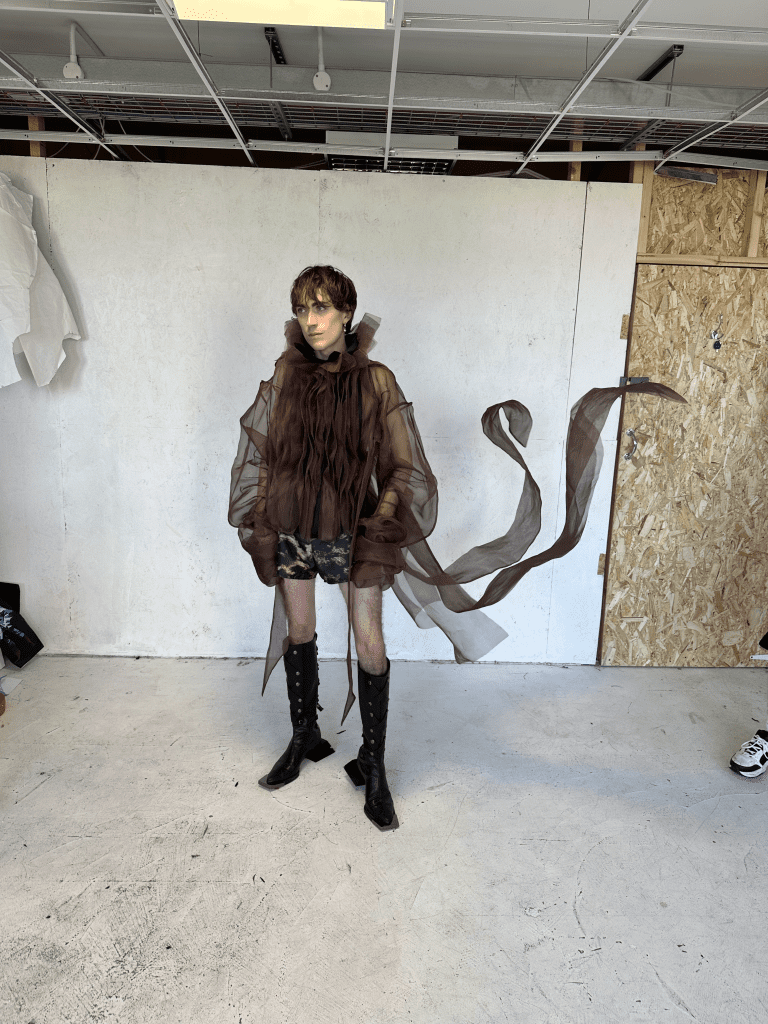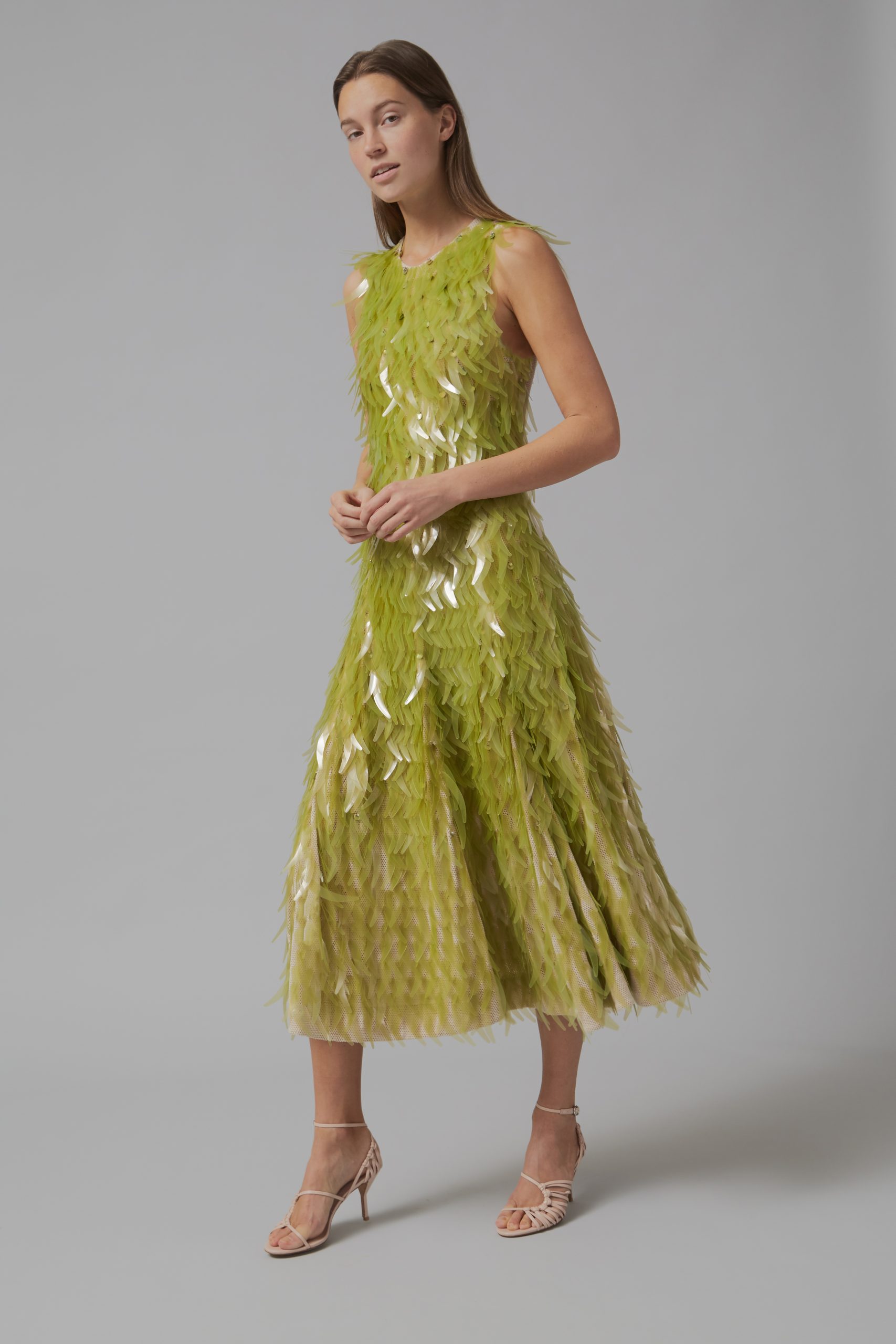Let’s Get Real: Behind The Scenes With Maximilan Raynor
Maximilian Raynor is a CSM graduate, albeit technically still a student having taken on his MA this year, but not many can say they dressed Rita Ora for the cover of Glamour Magazine, or styled Ashley Graham for the Cannes red carpet. It isn’t easy to speak about Raynor without fixating on the magical success of his last year, hitting headlines aplenty for his high profile dressings, but the 23-year-old was quick to note how he is cautious of reveling in the glamor – “I am trying to enjoy the process just as much as the destination”. Young, hungry and ambitious, Raynor acknowledges that sometimes he falls victim to the cliché of an overstretched millennial, never satiated, always looking for the next best thing. With a tad more earnestness, he tells GLITCH that he is constantly trying to clock his emotions, cherish the fact that his present job was once just a childhood dream, and remind himself that that in itself should be enough.
“It has felt like a rollercoaster, but also a rollercoaster I have been queuing for my whole life”
We were able to catch Maxi amidst his busy schedule, where Monday saw him tutoring and mentoring back on his home turf at Central Saint Martins in London. Between workshops, he was able to pop out to a nearby corridor, and although crouched on the floor and time-pressured, the effervescent designer was adamant about telling us his story, and did so in a way that was both eloquent but raw, and comedically matter-of-fact. The snippet of time we were able to steal from him gave GLITCH a bare-bones overview of what it means to be a budding designer trawling through these uncertain times.
Raynor’s story, albeit a rugged battle not dissimilar to most fashion successes, starts humbly in the countryside of Derbyshire. A lover of performance, young Raynor reveals to GLITCH that he in fact has a Grade 8 singing voice, and was part of the National Youth Theatre, beloved hobbies and accomplishments that have suddenly dwindled out of recognition whilst his textiles have stolen the limelight. Yet, fashion still gripped a corner of his heart from a very young age – “My mum jokes that I made my first piece aged 6 out of an old dog blanket and a blind”. Raynor used to conduct his own fashion shoots on his home farm, his two next door neighbors assembled as his muses, and it was in this way that fashion became part of his outdoor play, as they roamed the fields, camera and old curtain in hand. Maxi speaks of his parents, who he laughs quite frankly let anything go, not batting an eyelid when he rocked up to the dinner table in some garish handmade frock, and nurtured his passions. He is insistent that although he had no headstart in the fashion game, and was no beneficiary to nepotism, he did have the most valuable thing – unconditional family love and support.
Growing up, Central St Martins became a fixed and immovable dream laid out in Raynor’s plan for the future. In fact, he wrote to his idol at the time, Vivienne Westwood, stating firstly his yearning to be a designer, and secondly quite pointedly asking how he should go about getting into the prestigious school he revered. Her response, quite abruptly, and hilariously, was to ditch the whole idea; she slammed the worth of arts schools in a very anarchistic Westwood way, but did encourage him to keep designing. But Raynor, transfixed by the prestige, chose to ignore the late Dame’s advice, and applied not once, but twice, before getting into CSM on his third shot; he was adamant he would see that 10yr old’s dream fulfilled.
On reflection, he explains how Central Saint Martins was the contactbook he needed to excel into the industry. He views the school as a privileged stepping stone, its fame is resides in the fact that the whole fashion industry would always attend their graduate shows. The gallery were invited and watching, the moment was laid out, it was just up to the students to work hard, to hit the right note, and to have a little sprinkle of luck. For this he maintains huge respect for the institution and the unmatched opportunities it provides to its students. He does however acknowledge that it is a hot furnace, glutted with talent but also steadfast characters, “people say it of everywhere, but it does ring true of CSM, you certainly have to run with the punches”.
Maxi started by telling GLITCH about the two-fold narrative that consumes fashion students, and the emotional difficulty he recognises both in himself, and in the early students he mentors. He explains how the media conditions us to believe that breaking into the fashion arena is simply, and statistically impossible, but at the same time drills at the idea that ambition can be realized if we all just work a bit harder, and become a bit more grittier. Whilst he thinks there can be a healthy recognition of how competitive the industry is, he insists that more needs to be done to keep the dream alive, and motivate people to apply themselves to craft for the thrill of it, not to burn themselves to the ground through expectation. Maxi comments how the likes of GLITCH, and other emerging news outlets are so important in deciphering this conversation. It is important we have transparent reporting on the inner workings of fashion, and not just perpetuate one hyperbolic and sterilised outlook on a developing industry. “People criticise the growth of opinion sharing platforms and social media, and often believe our society is over saturated with ideas and imagery, but we mustn’t forget that this allows for more relatable and realistic inspiration and insight for younger generations. These are valuable resources that simply didn’t exist before”. Maxi claims the most rewarding manifestation of his work is the Instagram messages he receives from people all over the world responding and reacting to his pieces. The integrative community aspect of such platforms give him a satisfaction that is unparalleled to any cover or celebrity endorsement.
Speaking on success, Raynor doesn’t shy away from admitting that his studio has somewhat boomed in penultimate years, but does so in a way that is still lovably humble. He frankly talks about his internal battle with complacency. When he first attracted an eager following, he recognised that he fell into the trap of sometimes relaxing his focus, and becoming nonchalant about details – “Do not let the design suffer because you are in demand” he emphasizes as an imperative mantra to all emerging designers. “You have to keep a youthful innocence and a desperation to impress, that is my daily reminder, I want to constantly become more developed as a designer” .
Eager to strip the studio back to basics, and understand more about the 23-year-olds venture under his own label, we questioned who he thought Maximilian Raynor designs were for. A common question we often throw at creatives, Raynor’s response was unexpected, and made us rethink the lens through which we view artistry, as an investigative journalism outlet. Raynor told us candidly that he doesn’t think this is something he holds the reins of, it simply isn’t under his control. “At the start, because I was designing with a lot of interest in fashion history, and a lot of my references were in that “high culture” universe, I had imagined that my brand could be quite stuffy for some people, and only resonate with a particular person”. Instead, he explains that this couldn’t be further from the truth, Maximilian Raynor seems to placate a refreshingly disparate group of people, incredibly normal, and yet incredibly diverse. Art can be created with intention, but you cannot dictate its perception – “You have to birth your creation into the world, and then let it have its own life”.
Rephrasing our approach, we asked him instead how he begins his design process. He tells us that the vision always comes from characters, he likes to develop his pieces within a world, and within a storyline (his favorite being the queer romance narrative he imagines between Piero the clown and the harlequin). There is often a political undertone to everything he does. As an emotionally engaged person, who feels an alliance to activism, his clothes often communicate his own feelings of paralysis and inquisitiveness surrounding current affairs. He notes that a lot of his work also deals with issues of imprisonment and constriction, and relates this to his position on themes of gender and sexuality. “But that doesn’t have to be a defining thing….” – he also will quite wilfully turn to escapism, and find great influence in the fantastical and poetical.
Currently, the studio acts on quite a skeletal business model. Raynor makes one off pieces that are exhibited – the current mode of exhibition being Instagram – these then gain online traction with people who either want that piece recreated, want to borrow it, or want it loaned as a shoot. Maxi comments that he is not yet a brand, but that he is enjoying this intermediary business model, and for the time being, it keeps funds afloat. Entering the fashion industry very authentically meant that there has always been a necessity for Raynor to charge for his work, and push for fair compensation. This is something that is typically difficult for emerging creatives to be insistent on, amidst the loud voices, …….. laced with promises of exposure. We quizzed him about the next steps, wondering if he was wanting to keep the romantic idea of this small scale studio alive, or if he was wanting to commercially transition into a brand. He acknowledged that it would be naive to believe he can stay in this bubble, and is also very appreciative of the favors he has been endowed in his embryonic stages. He is realistic about the fact that he will have to scale up, and with all its shortcomings, it is also a stage in the dream.“I will find my own way, I’ve always had to pathe my own way, but that isn’t a bad thing, you can harness that power”. Raynor is now trying to manage and stabilise the way in which he commercialise, but still very much aspires to be stocked by the likes of Selfridges, Matches Fashion, and Dover Street Market.
“My advice would be work as much as you can for free, absorb everything. But there does come a point where that isn’t financially viable any more, and people need to acknowledge that”
We ended our conversation probing Raynor about his outlook on the industry as a whole. He has always been itching to be a part of it, and now he sits on that fence, glaring at the competition ahead, under the shelter of his student status. Raynor tells us he does have apprehension, but that could never dampen his avid excitement. Whilst a keen activist for the industry adapting and changing, he does believe that fashion faces disproportionate criticism when it comes to claims of over saturation – “people still want to see new films in the same genre, and people still want to try different chef’s creations of the same cuisine”. He hopes to see a lot more of a localized fashion world, he recognises that London is exclusively his monopoly, and he is simply okay with that. “It sounds utopian, but if fashion can be less about global presence, less city-centric, and exist within its own pockets, bubbles and communities, that will make it hugely less destructive”. He reiterates his opening point about admiring the process, and acknowledging the twang of naivety, he wishes for a world where everyone could do their own little art projects to placate their own little individual communities, a world he knows to be impossible against the backdrop of capitalism. Weighing it all up, he encourages people to live in the moment, to talk about the experience, and to build communities, to build conversation, and to work at their craft in a way in which they can always feel pride and accomplishment regardless of where it takes them. “Fashion is a beast, and dialogue is a way to combat it. At the same time, we need to ensure we are being real”
The Maximilian Raynor new collection will likely be released in February 2024, and although Maxi loves his previous collections and the success it has granted him, he hopes this will be a distinctive moment in his story as he turns to new forms of design. “I want to move away from just being known for my ribbon and tape textiles, and take the next step towards something new”. “Super glam, super subversive, super dramatic” – GLITCH are certainly keeping their eyes peeled.
Written by Hebe Street from GLITCH Magazine





